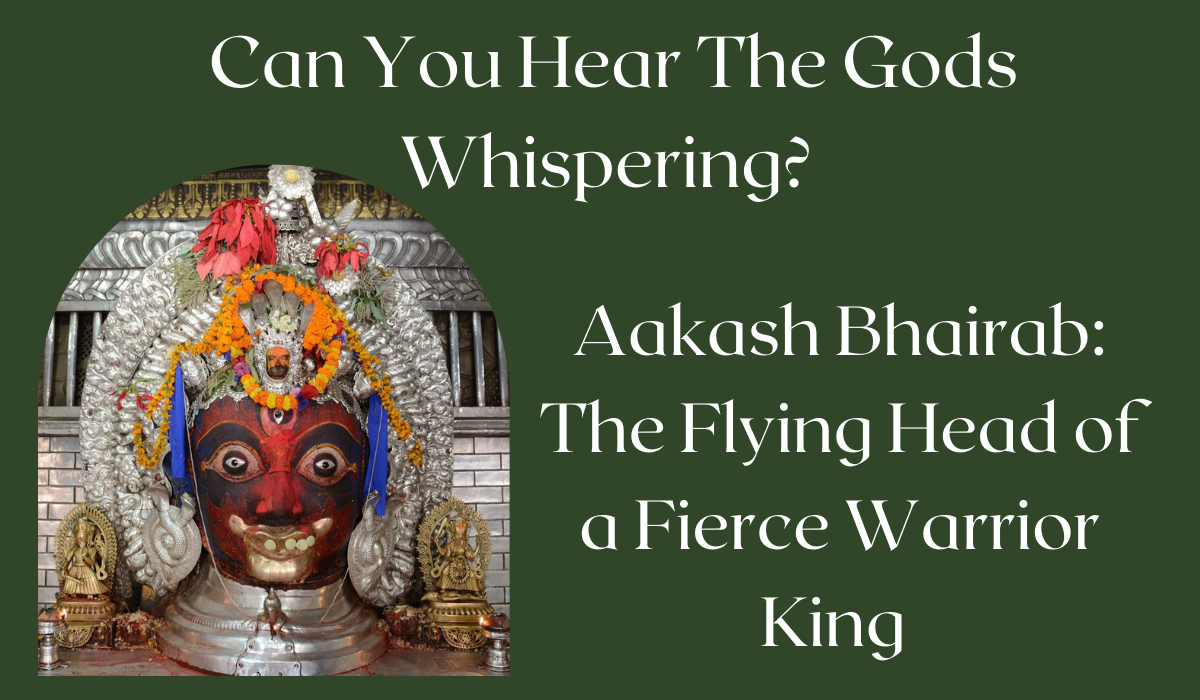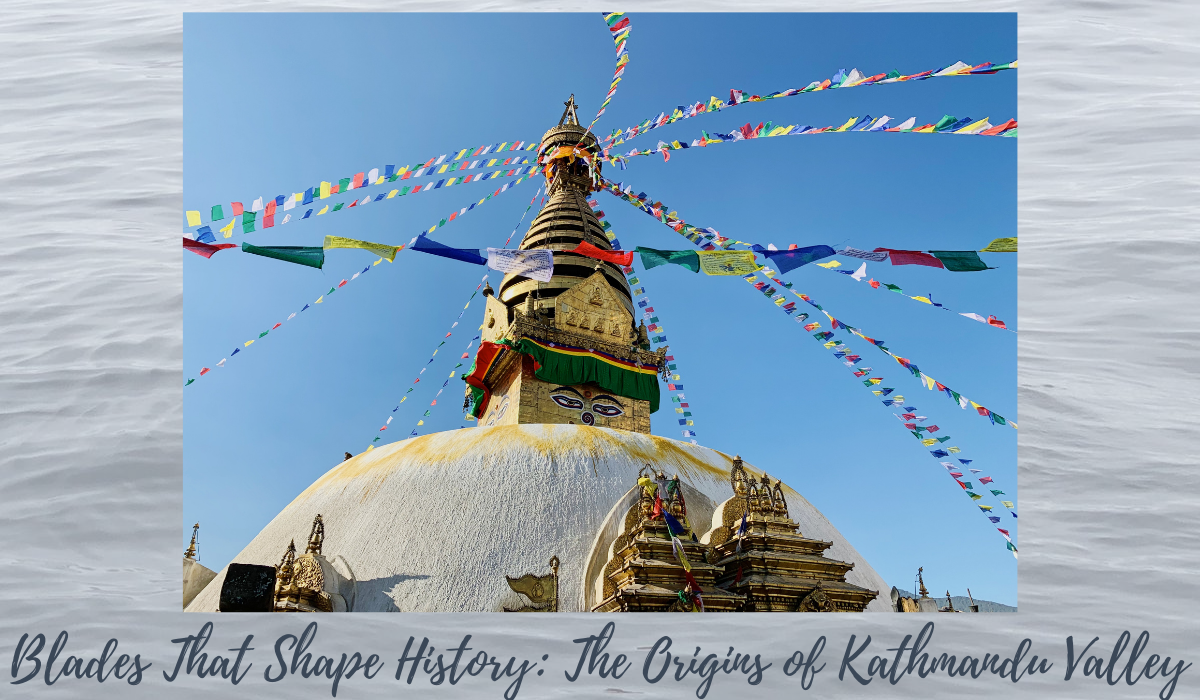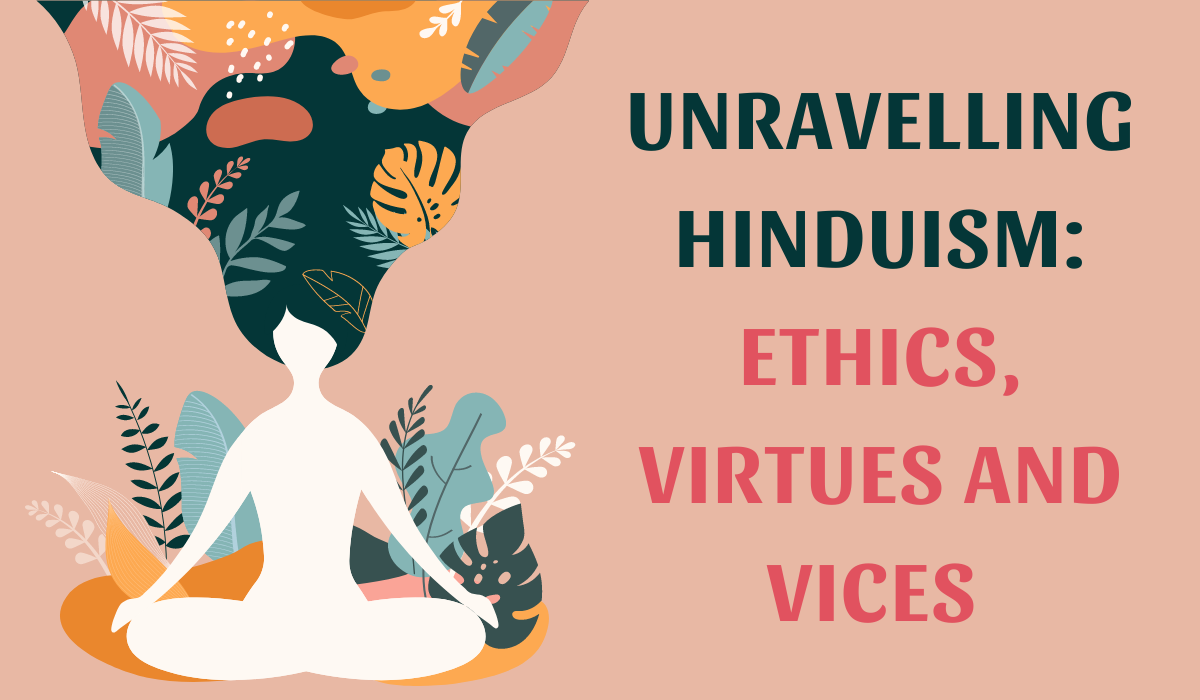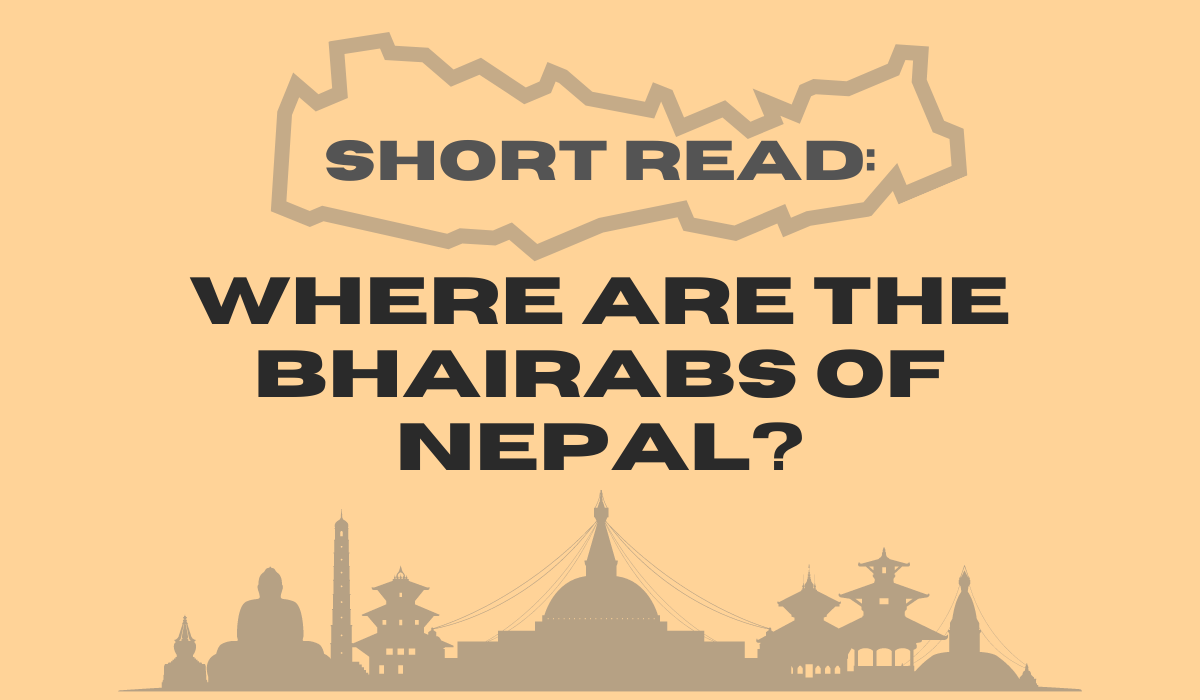Can You Hear the Gods Whispering: Aakash Bhairab, The Flying Head of a Fierce Warrior-King

Some years ago, I saw a book called “Kathmandu: where the Gods are young.” This title struck me so deeply that even now, almost a decade later I still recall it, even though I never got the chance to open up the book and see what was inside. There was something so profound about the title, it reminded me that I live in a city where the Gods are present at every turn. Each street corner has a small temple or shrine and our cityscape is defined by round Stupas and triangular mandirs. I would see these buildings without fully appreciating what it meant: that this city, this country, it’s history and it’s people are shaped by the divine in a way that I am yet to see in any other nation in the world.
I realised this more fully last year when I read two books, ironically both were completely unrelated to Nepal. “Mythos” and “Heroes” are books by the inimitable Stephen Fry. They are both collections of Ancient Greek Myths retold in an accessible way for modern readers and take us through everything from the Ancient Greek ideas of the creation of the universe all the way up to the famous Ancient Greek heroes and their various feats of triumph. Now you may wonder what all this has to do with Nepal. Well, as I read the stories about Gods coming down from Olympus to shape the course of human lives and to interact with mere mortals, I realised that what was happening in Ancient Greece many millennia ago was happening in our own country mere centuries ago. Of course Nepal is a country where the Gods are young, they were walking among us for thousands of years and even until just a few hundred years ago. We see the marks they have left on our nation even today. I cannot imagine a more spiritually alive country than Nepal.
What follows is a series of short stories that show exactly how intertwined the celestial and the earthly are in our country, and how the cities we live in and the streets we walk are there by divine purpose.
Before we get lost in the wonders of the stories that follow, I would like to pay tribute to the late Mir Subba Shiva Hari Rimal whose knowledge of Hinduism and Nepali history was unparalleled. He shared his wisdom with four generations of my family and I am so pleased to be able to share with our readers these myths and legends that he kept a record of. I hope that in passing along his knowledge I can keep his memory alive and can imbue the same love for Nepal that he had into all of us.
(Please note that what follows does not claim to be a factual, definitive or comprehensive history. These are stories that have been passed down in an oral tradition for many generations. There may be different versions of each of these stories and what is found here is simply one retelling. This article and its associated imagery are in no way meant to cause offence or wipe out any other narratives that may exist regarding these topics.)
Aakash Bhairab – The Flying Head of a Fierce Warrior-King
Just before entering the spiritual oasis that is Kathamandu Durbar Square, the temple of Aakash Bhairab can be found in Indrachowk. If you have visited this powerful and esteemed temple you may have noticed that the murti (statue) housed within the temple is missing his body. The exciting tale of how this deity came to lose his body and how he came to reside in Indrachowk is the subject of today’s story.
Many eons ago during the time when the Kirat kings ruled the area that is now Kathmandu, a King known as Raja Yulumbar sat on the throne. Many believe he was the first of the Kirat dynasty and a living descendant of the dynasty of the god Shiva, others claim that he was the son of Ghatotkach, making him the grandson of Bheem (both characters from the Mahabharata). Yalumbar travelled to Kurukshetra where the legendary war described in the Mahabharata was taking place. The king made his way to the battle with the intention of joining the Kauravs against the Pandav brothers. However, such were the tales of Raja Yalumbar’s prowess in battle and so admired was he for his bravery, that the god Krishna (who was on the side of the Pandavs) declared that Raja Yalumbar’s alliance with the Kauravs would surely result in the rapid conclusion of the battle and would ensure the defeat of his beloved Pandavs. Some sources tell us that Raja Yalumbar would have ended the war with just three arrows shot with absolute mastery from his bow. Hence, in order to increase the likelihood of the Pandav’s victory (which just in case you didn’t know, eventually came to pass) Krishna took the bold step of beheading King Yalumabar.
Despite his beheading, Raja Yalumbar was still an esteemed warrior and therefore Krishna granted him his final request: to watch the epic battle of Kurukshetra. King Yalumabar, now just a head without a body, rested in an advantageous lookout point from where he was able to watch the legendary battle progress.
Having watched the entirety of this most famous battle, Yalumbar looked toward the sky (aakash) and made his way towards it. He travelled through the sky back toward his homeland. Yalumbar reached his destination eventually and chose to settle in an idyllic location between the Bagmati and Vishnumati rivers, which he deemed to be the perfect location to rest; a place we now know as Indrachowk. He settled himself comfortably in this location.
While the centuries have passed and the days when the gods walked among us and determined the outcomes of our battles appear to have come to end, Yalumbar, known forevermore as Aakash Bhairab due to his celestial lineage and mode of travel, rests in his chosen home at Indrachowk. This powerful being’s head is located in the heart of our city in the form of a stone statue and draws many temple-goers, most notably on the night of the full moon. Perhaps the most vibrant festival to take place in Kathmandu, Indra Jatra, also places Aakash Bhairab at its centre. The murti of the deity is taken out of the temple at this time as Nepalis celebrate the return of Yalumbar to Kathmandu.
It seems extraordinary, does it not? A flying head, the descendant of Shiva and someone who supposedly had the power to change the outcome of what is arguably the most glorious war in the history of the world, lives right here in our midst. We walk or drive past him perhaps without a glance in his direction. I hope that now, having learnt of his bravery, resilience and his determination to return to his swades, the land he called home, we can all learn that no matter the obstacles we face, if a native of our land could get through this most trying of obstacles, we can all get through ours.
If you wish to read more on the series “Can You Hear the Gods Whispering” please click the links below:


